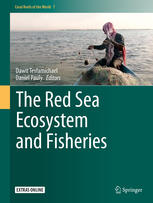

Most ebook files are in PDF format, so you can easily read them using various software such as Foxit Reader or directly on the Google Chrome browser.
Some ebook files are released by publishers in other formats such as .awz, .mobi, .epub, .fb2, etc. You may need to install specific software to read these formats on mobile/PC, such as Calibre.
Please read the tutorial at this link: https://ebookbell.com/faq
We offer FREE conversion to the popular formats you request; however, this may take some time. Therefore, right after payment, please email us, and we will try to provide the service as quickly as possible.
For some exceptional file formats or broken links (if any), please refrain from opening any disputes. Instead, email us first, and we will try to assist within a maximum of 6 hours.
EbookBell Team

4.3
68 reviewsThis book is the first comprehensive coverage of Red Sea fisheries to inform researchers and decision makers. The Red Sea is a geologically young sea, but also an area with the oldest record of human sea food exploitation. Examining the fisheries of the Red Sea has become extremely important to understand the ecosystem and the direct human impact of fishing on Red Sea ecosystems. This volume gives extensive data on different fisheries sectors identified and described for each country bordering the Red Sea. Furthermore, its catch and specific composition is also described over the period 1950 to 2010. Combined with the ecosystem model this useful information can uniquely help managing fisheries and ecosystems of the Red Sea.